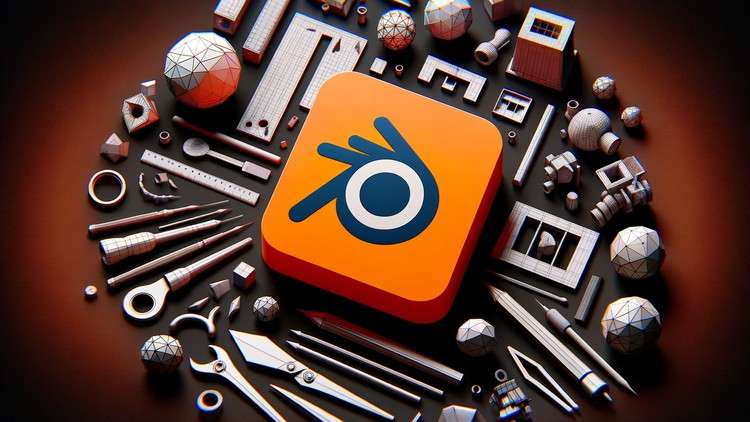
Comprehensive Guide to Blender: Covering 3D Modeling, Texturing, UV Mapping, Photorealistic Rendering, and More!
What you will learn
Master Blender’s interface and basic tools for efficient 3D modeling and navigation.
Develop skills in realistic 3D modeling, focusing on furniture like chairs.
Learn UV unwrapping and texturing for enhanced visual appeal of models.
Gain expertise in advanced shading and photorealistic rendering techniques.
Understand and apply essential modeling tools, such as extrude and bevel.
Achieve proficiency in editing and refining 3D models using modifiers and mesh editing.
Acquire skills in applying realistic wood textures to 3D models for authenticity.
Master the Shader Editor and integrate advanced materials for detailed finishes.
Description
“Blender Mastery for Beginners: 3D Design & Rendering” is a comprehensive course designed to guide you through the fascinating world of 3D modeling and rendering using Blender, one of the most popular open-source 3D creation suites. This course is meticulously structured to cater to learners of all levels, from beginners taking their first step in 3D design to intermediate users seeking to enhance their skills.
Starting with the basics, you’ll first become acquainted with Blender’s user interface and fundamental concepts essential for navigating and creating within the 3D space. You’ll learn how to efficiently use Blender’s tools for modeling, covering everything from simple transformations to advanced techniques like subdivision surface modification and mirror modification.
A significant focus of the course is on realistic 3D modeling. You’ll embark on a project to create a detailed and lifelike chair, applying various tools and modifiers. This hands-on approach ensures that you not only understand the theories but also how to apply them in practical scenarios.
Texturing and UV mapping are crucial for adding realism to 3D models. You’ll delve into UV unwrapping methods and learn how to apply and adjust textures, with a specific focus on achieving realistic wood textures that bring your models to life.
Shading and lighting are what make your models pop in the final render. In this course, you’ll gain proficiency in using Blender’s Shader Editor and explore different lighting techniques. By the end of the course, you’ll be equipped with the skills to prepare and execute photorealistic renders, giving your 3D models the final touch they deserve.
Whether you’re looking to start a career in 3D modeling, enhance your current skills, or pursue 3D design as a hobby, this course offers the knowledge and hands-on experience you need to succeed in the world of 3D design and rendering with Blender.
Content